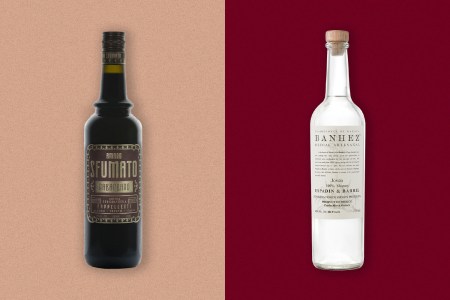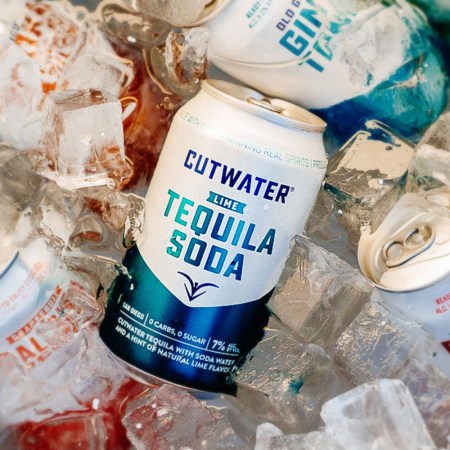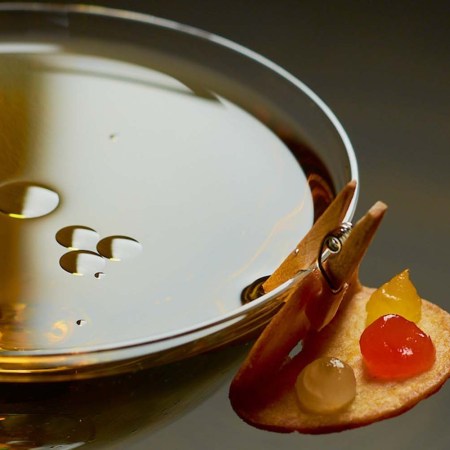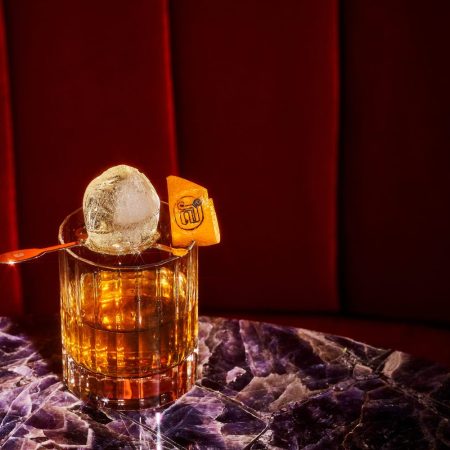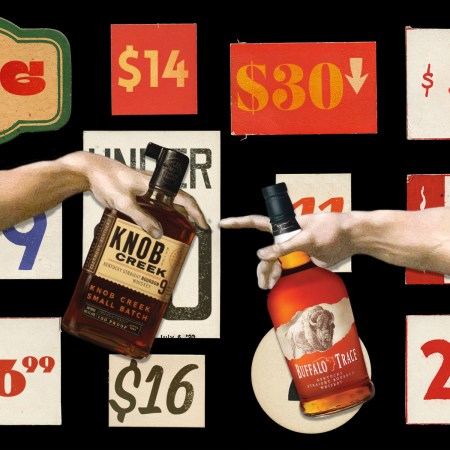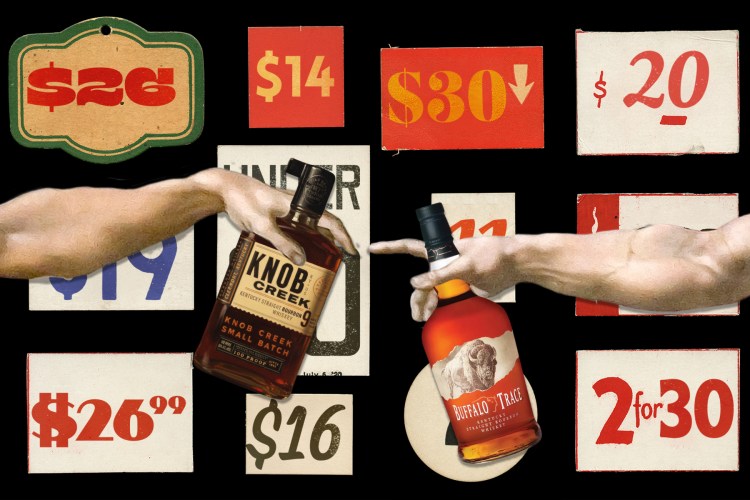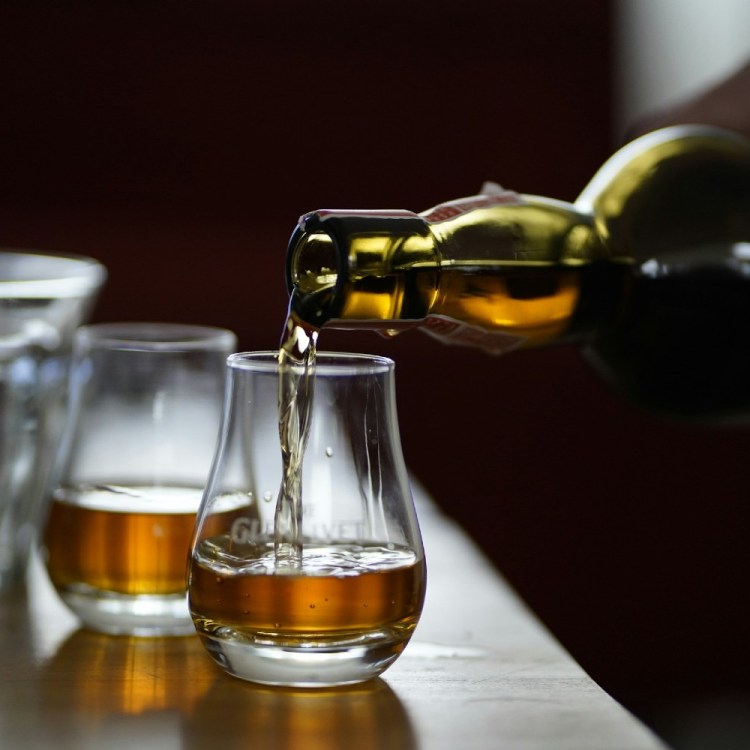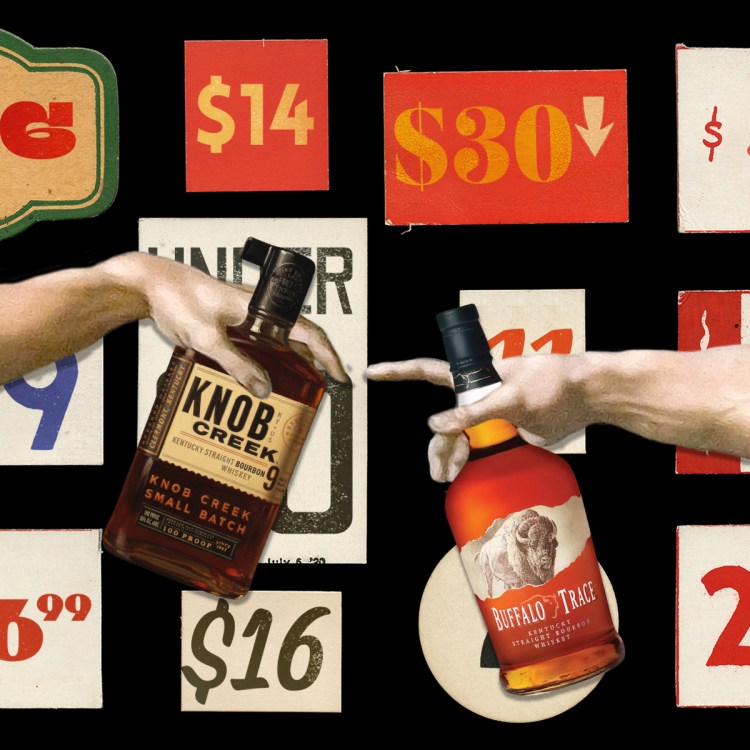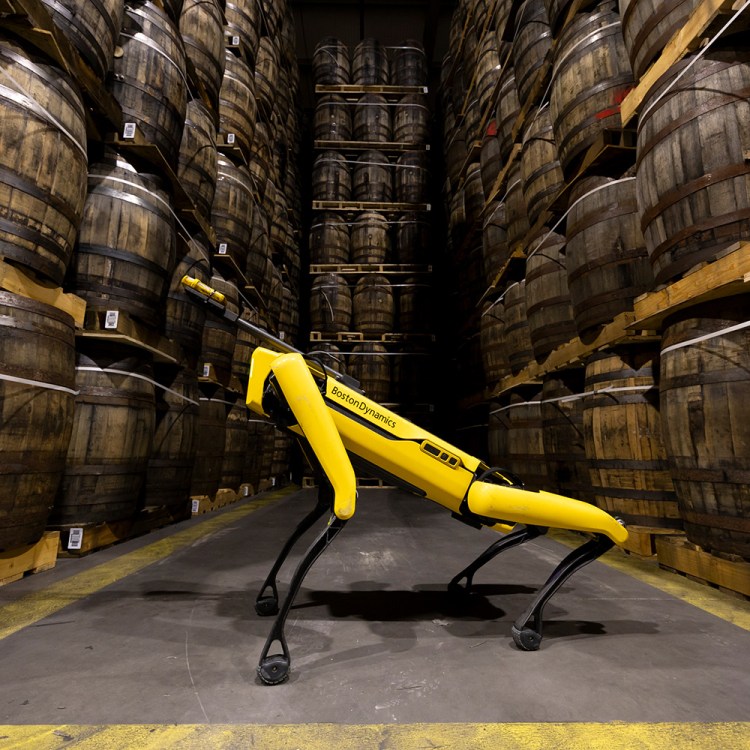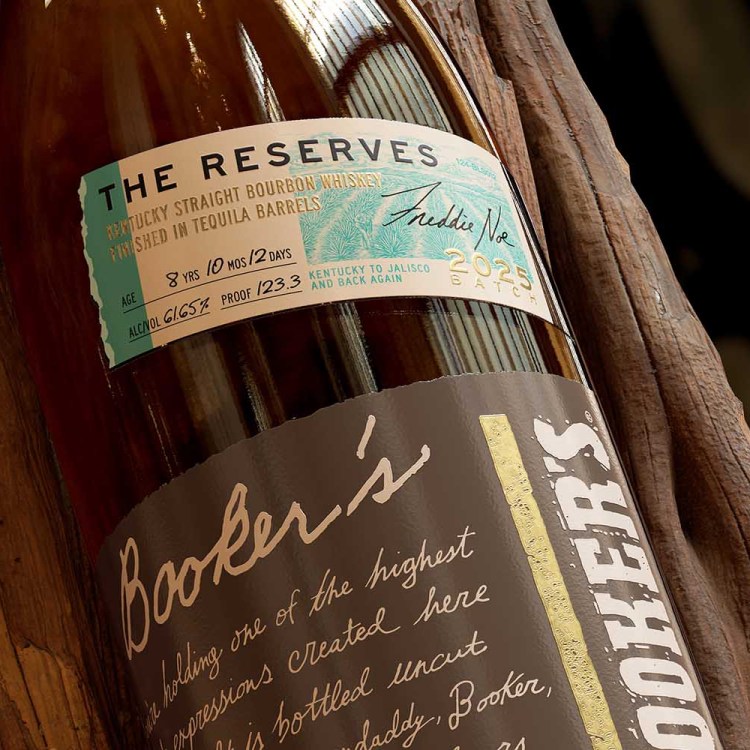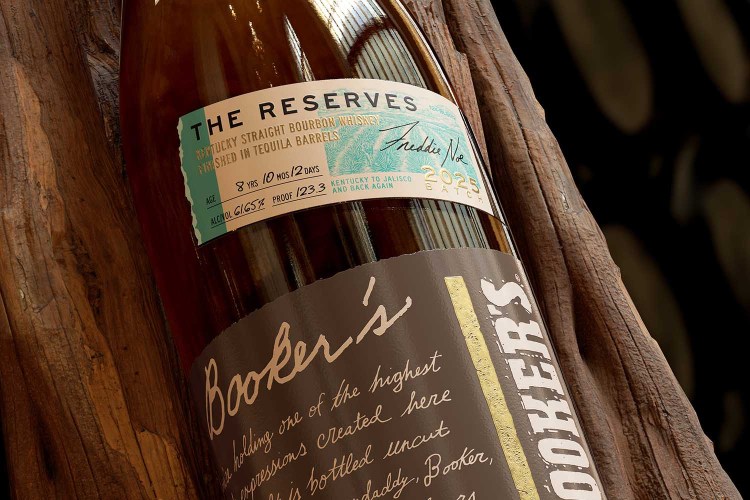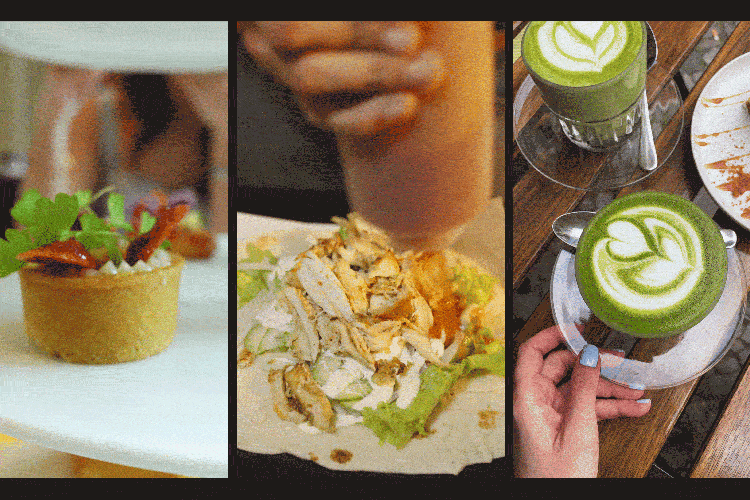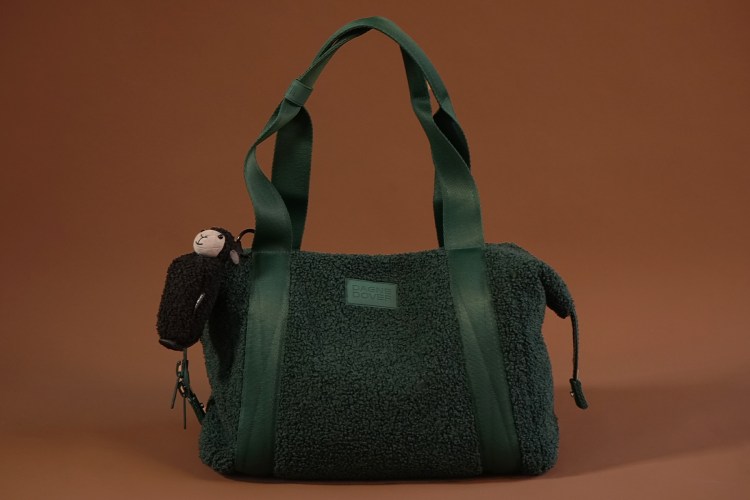The two-ingredient cocktail isn’t new, especially if you’ve ever had a highball, a Rusty Nail, Black Russian or Mimosa. But it’s also sort of a lie. Even the earliest description of a cocktail, from 1806, defined cocktails as “a stimulating liquor, composed of spirits of any kind, sugar, water and bitters.”
So that’s basically three or four elements to the most basic of drinks. Thankfully, it is possible to make interesting cocktails with just two ingredients, as proven by the new book Pour Together, a take on mixed drinks by longtime food and beverage writer Roger Kamholz.
“I am here to tell you, with the long-windedness of a whole book, that leaning one card against another — as modest in ambition as that may sound — can work magic,” he writes. “I would argue there’s no more remarkable alchemy in the realm of cocktails than when but a pair of ingredients pour together to make magic happen.”
The 50-50 Cocktail Is a Miracle of Modern Mixology
Two-ingredient cocktails made with equal proportions. What’s not to love?He also defines two-ingredient cocktails in a way I can accept; he doesn’t include water/ice or garnishes as ingredients (bitters can go either way, as he explains below). That said, Kamholz’s recipes go beyond a simple Gin & Tonic — which is in here but features Bonal Gentiane-Quina instead of tonic water — and into more interesting twofer concoctions, be it Oolong Hai (oolong tea and shochu) or The Root of All Evil (absinthe and root beer).
We spoke with Kamholz about his book, and he also offered up one of his favorite two-ingredient cocktails, which you’ll find below.

InsideHook: Were there some cocktails that you had to omit because it technically would have three ingredients?
There are drinks I adore that come close to two-ingredient status but ultimately didn’t make the cut because they infringed on the rules I established. The Caipirinha is one example. The base spirit in this cocktail is funky-fragrant cachaca, from Brazil. To make a Caipirinha, you muddle sugar with wedges of lime to make a pulpy, sour-sweet slurry, then douse that in cachaca and ice. One could argue that citrus wedges like the lime in a Caipirinha tread on garnish territory (i.e., not an ingredient). But in this drink, the lime functions more like an ingredient than a garnish. The Manhattan is another. Such a timeless classic should be part of any home bartender’s repertoire. But in my opinion, the duo of whiskey and sweet vermouth isn’t complete on its own and must be trio’ed with bitters — it’s not an optional flourish.
Conversely, were there any typically three- or four-ingredient cocktails that you were able to get down to two?
When I first tried Maison Premiere’s Absinthe Colada more than 10 years ago, it was a revelation. As an absinthe fan, I loved the unexpectedly harmonious combination of tropical and alpine flavors. The Absinthe Colada includes rhum agricole, absinthe, creme de menthe, pineapple and coconut. In my book, I included a recipe I developed for an Absinthe Coconut Frappé that uses coconut cream. It’s much simpler to make than MP’s drink but delivers a measure of the surprise and delight of the cocktail that inspired it.
Do you consider bitters an ingredient or (as you put it) part of a supporting cast with two co-stars?
The unsatisfying answer: It depends! Bitters can play a major role in a drink and how it tastes, such as the Angostura that typically seasons a Manhattan. But not always. Some cocktails include bitters in minute doses, only slightly affecting the taste of a drink. Orange bitters in a Dry Martini improve the drink but aren’t essential like the ingredients of gin and dry vermouth are.
Below, a recipe from “Pour Together” suggested by Kamolz.

Reprinted with permission from Pour Together: A Cocktail Recipe Book by Roger Kamholz. Copyright © 2025 by Roger Kamholz. Photographs copyright © 2025 by Suech & Beck. Published by Clarkson Potter, an imprint of the Crown Publishing Group, a division of Penguin Random House LLC, New York.
I’m not calling this cocktail perfect in any self-congratulatory way. In the realm of mixed drinks, “perfect” is a term applied to ingredients in equal measure. A “perfect” Manhattan would have the same amounts of whiskey and sweet vermouth, for example. So, this Perfect Sake Martini is equal portions of sake and gin. Sake is made from the fermentation of rice. Humble as it sounds, sake is an incredibly diverse beverage category with a range of expressions that seem implausible given the raw materials. From flower-petal delicate to grain-bowl savory, sake provides a bounty of options to choose from. This cocktail is an opportunity to tap into each ingredient’s complexity and connect the dots of flavor. Citrus-forward gins can find kinship in tartly acidic sakes, whereas more nuanced botanical gins may work well for the cleaner varieties of sake.
Perfect Sake Martini
Prep Time: 5 mins
Servings: 1
Ingredients
- 1.5 oz. sake, preferably Junmai
- 1.5 oz. gin, such as Forthave Spirits Blue or The Botanist
Directions
-
-
Add the sake and gin to a mixing glass. Add ice and stir for 30 seconds.
-
Strain into a chilled coupe or Nick & Nora glass.
-
(Optional) Drop in a green olive (preferably unpitted Castelvetrano) as a garnish.
-
Every Thursday, our resident experts see to it that you’re up to date on the latest from the world of drinks. Trend reports, bottle reviews, cocktail recipes and more. Sign up for THE SPILL now.


